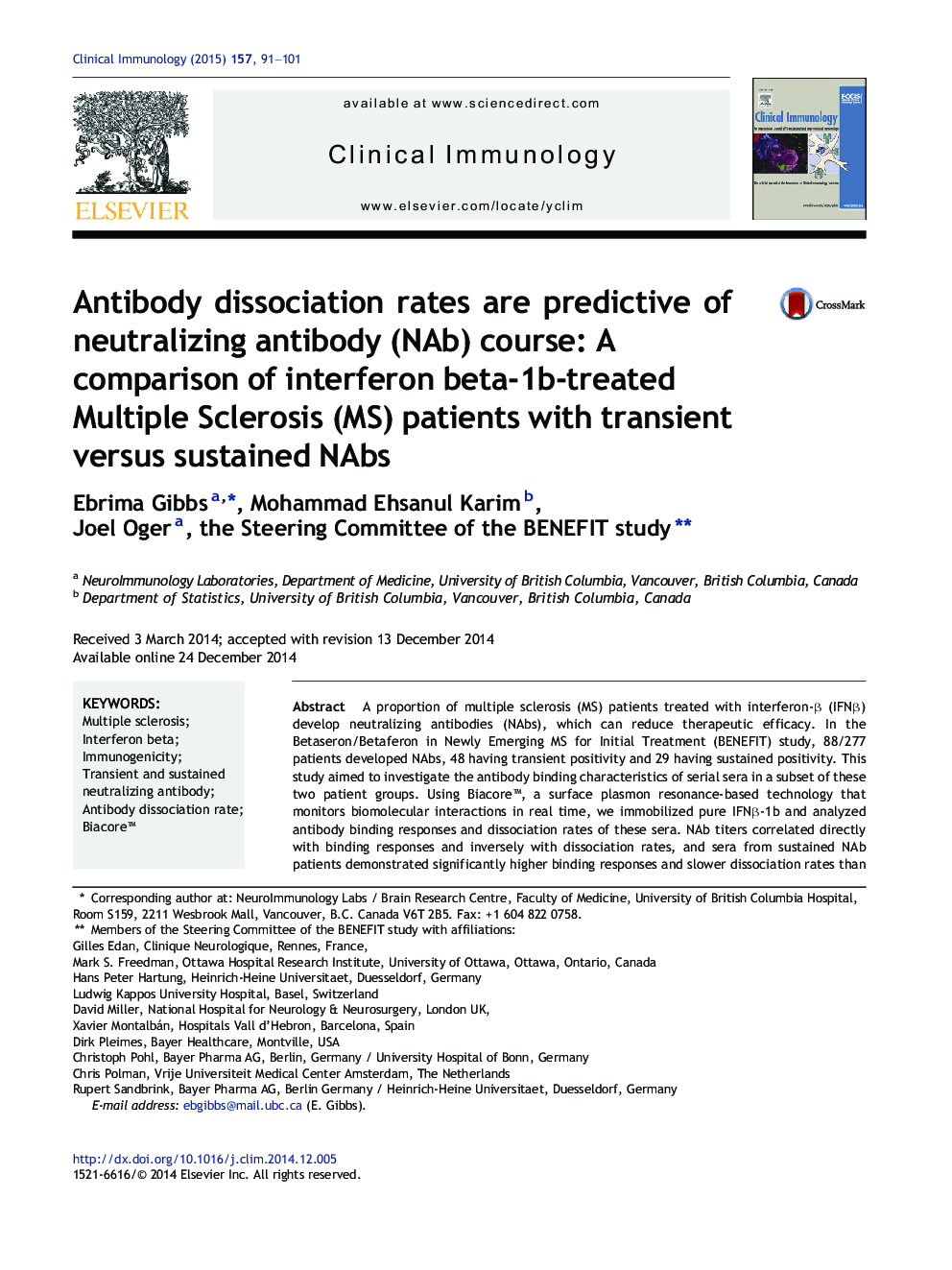| Article ID | Journal | Published Year | Pages | File Type |
|---|---|---|---|---|
| 6087339 | Clinical Immunology | 2015 | 11 Pages |
â¢The binding responses and dissociation rates of antibodies differs between patients with transient and sustained NAbs to IFNβ.â¢Sustained NAbs tend to possess antibodies with higher binding responses and slower dissociation rates than transient NAbs.â¢NAb titers are directly correlated with binding responses and inversely correlated with dissociation rates.â¢Determination of binding responses and dissociation rates at month 12 can predict the course of the NAbs.â¢Transient and sustained NAbs are quantitatively and qualitatively different.
A proportion of multiple sclerosis (MS) patients treated with interferon-β (IFNβ) develop neutralizing antibodies (NAbs), which can reduce therapeutic efficacy. In the Betaseron/Betaferon in Newly Emerging MS for Initial Treatment (BENEFIT) study, 88/277 patients developed NAbs, 48 having transient positivity and 29 having sustained positivity. This study aimed to investigate the antibody binding characteristics of serial sera in a subset of these two patient groups. Using Biacoreâ¢, a surface plasmon resonance-based technology that monitors biomolecular interactions in real time, we immobilized pure IFNβ-1b and analyzed antibody binding responses and dissociation rates of these sera. NAb titers correlated directly with binding responses and inversely with dissociation rates, and sera from sustained NAb patients demonstrated significantly higher binding responses and slower dissociation rates than sera from transient NAb patients. Thus, transient and sustained NAbs are quantitatively and qualitatively different, and interestingly, binding responses and dissociation rates at month 12 could predict the NAb course.
